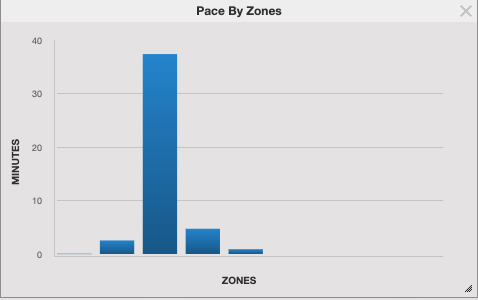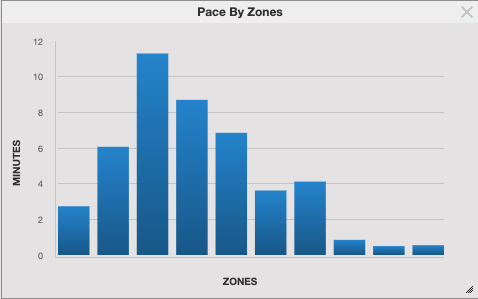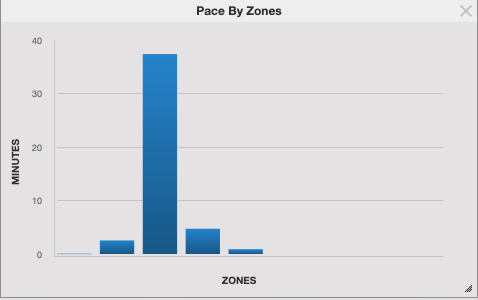I want my athletes to give me the finger, and often. Actually I look for it in about 80% of their workouts. And I encourage it.
I’ve been describing it like this to myself for a few years. The idea of this article has also been floating around my head for just as long. I just haven’t verbalised it to anyone….so excuse me if this seems a bit of a weird context 😃
I’ve recently taken on board a new athlete and they are reasonably new to running and even newer to coached running and running with data. When you are learning any new skill it takes a while to adapt, and this isn’t a slight at them but an article written to help them and also help future athletes that are also like them.
Firstly, what do I mean by giving the coach the finger? When the different training zones are represented in a graph, those with the greater amount of time spent training in them looks like an extended middle finger with the knuckles showing the other zones with a small amount of training time occurring in them.
For endurance athletes one of the primary goals of training is developing the efficiency of the aerobic system and this is done through about 80% of the training done at lower intensities (but not so low that it’s ineffective – other wise the best runners will also be the best at lying down doing nothing).
You can get a lot more detail on this from the likes of Matt FitzGerald’s books 80/20 Running, and 80/20 Triathlon although these are relatively new books the concept has been around a long time and the likes of Arthur Lydiard also had athletes doing the bulk of their training at lower intensities. The other roughly 20% is a higher intensity to develop other physiological adaptations.
With the bulk of aerobic efficiency enhancements occurring at the lower intensity I prescribe training zones based on their maximum steady state intensity….whether by Heart Rate (HR), Pace, Power for endurance athletes I get them to do a test that looks at their ability to sustain an effort. Eg an Functional Threshold Test (FTP) for cyclists (as opposed to a RAMP test), a Time Trial for either cyclists, runners, or swimmers, all look at your ability to sustain your maximal effort for a duration of time. There are a number of well researched methods of determining appropriate intensities based off your maximal steady state efforts.
To derive the most benefit from your training time, optimising time spent in zone will give you that, within reason. Power is great because it is a measure (or a calculation depending on the device) of force generated over time and is independent of the terrain that is being covered. Pace is dependant on terrain, as your effort/intensity will need to increase to maintain the same pace when going up hill and vice versa for any downhill. With Heart Rate (HR) this is your body’s response to exercise and occurs with a short delay and it is also impacted by some many other variable (from the timing of your morning coffee, to the quality of sleep you had last night).
So when I look at someone’s training (assuming it was a steady state session, not some intervals or hill reps or some other style of session) I look to see how much time they have spent at Level II. If their graph is giving me the big finger they have spent plenty of time within the zone. I don’t expect them to spend 100% of time in zone, unless they are running on a treadmill or riding on a smart trainer.
When they have been for a run or a ride out in the real world I expect some time out of zone, but it is still reasonable to spend more than 60% of the time in zone and for those with a focused effort even on a slightly undulating course they can achieve 80% in zone if running by pace. Running or riding with power can see more than 85% or 90% even in zone and if training by Heart Rate (HR) it is usually a bit less than 70% on a good day.
Here are two runs from two different athletes I coach, both ran in the same general location on the same day (although not together – one was late morning and the other was early afternoon), parts of their run route overlapped.


Athlete 2 gave me the finger, but athlete 1 did not.
There are plenty of benefits for athletes to maximise their time within zone. It takes time to develop your consistency and your internal speedometer to know, and feel intrinsically what pace you are running at, or power you are riding at, but with practise you can and will get better and reap even more benefit from your training.



